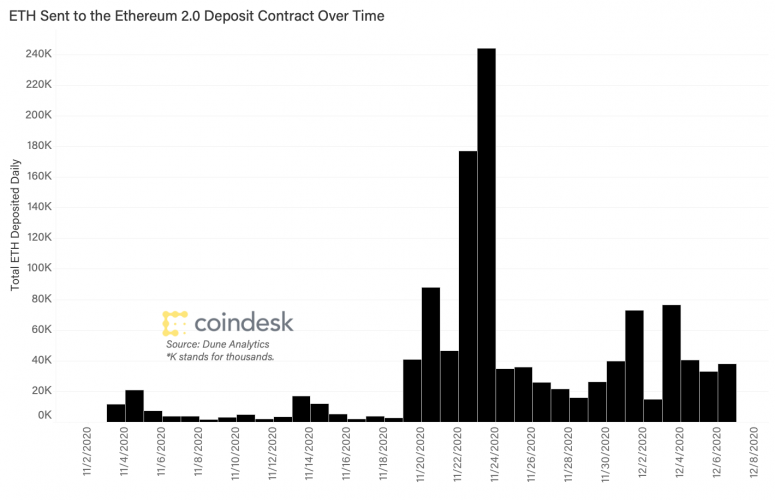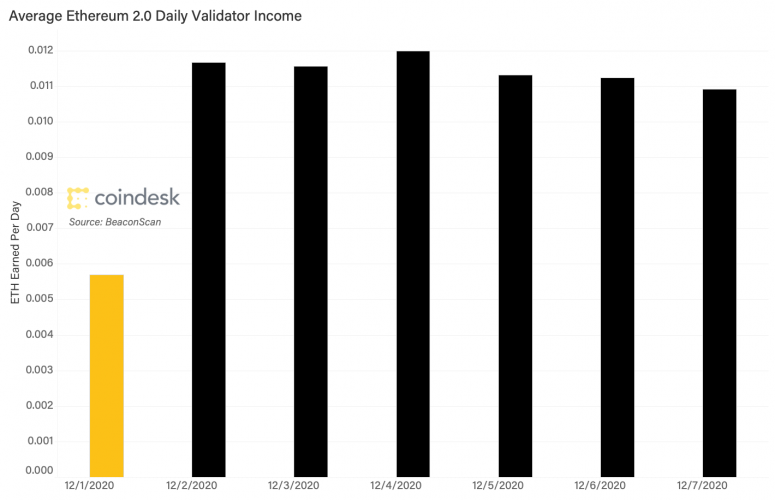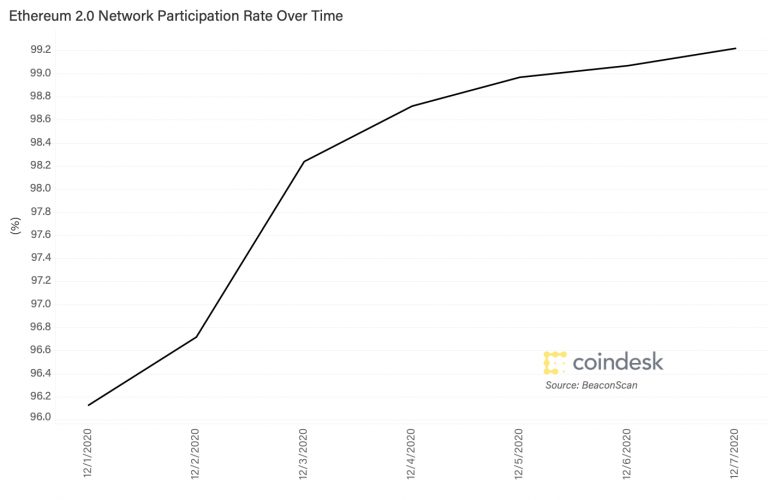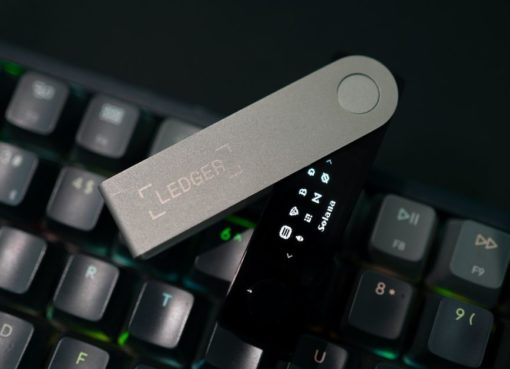Since the epic launch of Ethereum 2.0 last Tuesday, there have been tons of data about its activity to decipher and analyze.
Early statistics shared after the first day of launch in our previous newsletter revealed how Eth 2.0 was inundated with 66% more funds than the minimum required to secure network operations. We were also able to view in real time the progression of over 100 epochs, in which more than 3,000 blocks were processed by validators.
Heading into the network’s second week of live development, we’re seeing the total amount of staked ether continue to rise for the network from 66% to 141% above the original threshold of 524,288 ETH. We’re also seeing a higher number of blocks and epochs finalized on the network, which is positively impacting the amount of rewards validators accrue daily.
We’ll take a deeper look at some of these Ethereum 2.0 metrics in our weekly Pulse Check. Then, for the New Frontiers essay, we’ll explore some of the scaling solutions to Ethereum that are being developed alongside the Eth 2.0 upgrade.
Pulse check
One full week has passed since the launch of Ethereum 2.0 on Tuesday, December 1.
Over that time period, deposits of 32 ETH (worth roughly $19,000 at time of writing) to the network have increased an additional 40% to 1.2 million ETH. This means that roughly 1.1% of the total circulating supply of ether is locked into securing the new proof-of-stake network. These funds will be immovable until developers enable a two-way bridge between the current Ethereum blockchain and Eth 2.0.
For now, users who have deposited the minimum amount of 32 ETH to Eth 2.0 can do little else with their funds except validate. Validating on Eth 2.0 primarily consists of proposing new blocks and attesting to blocks that other validators have proposed. With each proposal and attestation, validators earn rewards that are automatically added to their staked ETH.
The first day of Eth 2.0 brought an average earning of 0.00569 ETH. This is slightly higher than what we reported in our previous issue of Valid Points, which was 0.00403 ETH. (Our calculations counted the rewards earned from the first 100 epochs rather than the full 112 epochs initiated on that day.)
As explained in our first Valid Points issue, an epoch on Eth 2.0 is a cycle of time lasting roughly 6.4 minutes in which up to 32 blocks on the network can be processed.
While on the first day only 112 epochs were initiated, the subsequent days saw more than 1,500 epochs in which more than 42,000 blocks were proposed. As a result, average daily validator income has almost doubled to 0.011 ETH/day as of Tuesday, Dec. 8.
One final metric to highlight in today’s issue is the validator participation rate which, as of Monday, Dec. 7, is at an all-time high of 99.22%.
This chart illustrates what percentage of eligible validators on Eth 2.0, on average, are attesting and proposing blocks. A figure as high as 99% indicates nearly all users who have staked on Eth 2.0 and passed the activation queue for entry into the network are participating in consensus.
A high participation rate among Eth 2.0 validators comes as no surprise, given there is little else for users to do on the network. However, as network functionality broadens and the pool of validators continues to increase, we’re likely to see variations from this near-perfect figure.
New frontiers
Scaling Ethereum doesn’t only come down to Eth 2.0. In fact, Eth 2.0 could fail.
Luckily, Ethereum developers know this and have solutions on the table. When you’re attempting to build a new financial system, a backup isn’t a terrible idea.
Some are layer 2 (L2) throughput solutions like Rollups. Some depend on making the Ethereum Virtual Machine (EVM) the go-to standard for smart contract blockchains. And there’s always making incremental adjustments to the current Eth 1.x blockchain with research from Eth 2.0.
This year, however, a new proposal, EIP 1559, has taken off in developer circles and looks likely to not only be a large part of making Ethereum usable in the near term, but also an integral part of the Eth 2.0 update.
First penned by Vitalik Buterin and a few other developers in 2018, EIP 1559 will help keep the Eth 1.x network humming along while Eth 2.0 continues in development.
It accomplishes this by addressing Ethereum’s biggest problem: fee pressure. Like Bitcoin in 2017, network fees continue to hamstring Ethereum-based projects during times of high market volatility. For example, Ethereum fees broke record highs numerous times in August and September due to demand for Ethereum blockspace from decentralized finance (DeFi) applications, sending the cost of simple payments on MetaMask into the single or double digits.
EIP 1559 changes the Ethereum fee market in two ways: Implementing a dynamic fee paid in ether and burnt to the network, plus an optional tip feature to Ethereum miners.
Called BASEFEE, the burnt fee creates a lower bound on how much it costs to transact on Ethereum. The tip allows urgent transactions to jump the queue to be processed into a block and settled on the Ethereum blockchain. Of the two, BASEFEE has garnered more attention due to the game theoretical implications of imposing a consistent fee burn over the more traditional first auction model Ethereum currently uses.
Columbia University computer scientist Tim Roughgarden recently published a report fleshing out the possible consequences from a new Ethereum fee model.
Generally, he found the two largest positives from EIP 1559 are better fee estimation and a new deflationary pressure on ether.
Better fee estimation will make the dapp experience more slick and will lower fee variance, he said. Moreover, a new deflationary pressure on ETH through transaction burns is thought to be a positive for the long-run price implications of the digital asset.
Not only do users have to use ETH to use the network, a little bit is destroyed forever every time they do so. For example, a Dune Analytics dashboard modeling EIP 1559 if it were already active assumes some 1.23 million ETH worth $710 million would have been burnt in the last year. (Not surprisingly, Ethereum miners are less than enthused over the proposal).
That’s a long way of saying there’s a lot more going on than just Eth 2.0.








